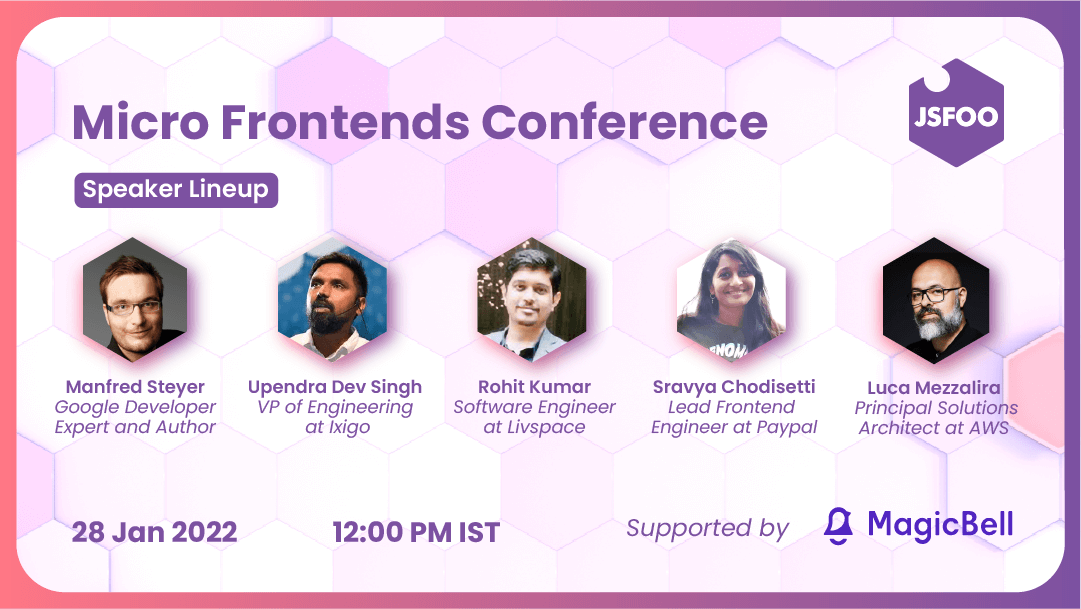
Jan 2022
10 Mon
11 Tue
12 Wed 09:00 PM – 10:00 PM IST
13 Thu
14 Fri
15 Sat
16 Sun
Jan 2022
24 Mon
25 Tue
26 Wed 09:00 PM – 10:00 PM IST
27 Thu
28 Fri 12:00 PM – 03:35 PM IST
29 Sat
30 Sun

Jan 2022
10 Mon
11 Tue
12 Wed 09:00 PM – 10:00 PM IST
13 Thu
14 Fri
15 Sat
16 Sun
Jan 2022
24 Mon
25 Tue
26 Wed 09:00 PM – 10:00 PM IST
27 Thu
28 Fri 12:00 PM – 03:35 PM IST
29 Sat
30 Sun
Sravya Chodisetti
Submitted Dec 21, 2021
It is easy to build independent, stand-alone micro-frontends, but the real world applications are not so straightforward. Applications and fragments in micro frontend architecture need to exchange data and events in order to provide a wholistic experience to the users.
In this session we will explore the various ways that multiple fragments in a micro frontend architecture can communicate to exchange data and events (multi-level and sibling fragments), handle and manage shared state, and optimize data fetching at the client and at the server for varied architectural settings (CSR and SSR).
We will also look at the mapping for these communication patterns to various application use-cases.
Sravya Chodisetti - Lead Frontend Engineer at Global Merchant Lending team, PayPal. Global Merchant Lending suite of products, part of PayPal Credit, provides millions of small businesses around the world with quick and easy access to capital, boosting their liquidity.
Jan 2022
10 Mon
11 Tue
12 Wed 09:00 PM – 10:00 PM IST
13 Thu
14 Fri
15 Sat
16 Sun
Jan 2022
24 Mon
25 Tue
26 Wed 09:00 PM – 10:00 PM IST
27 Thu
28 Fri 12:00 PM – 03:35 PM IST
29 Sat
30 Sun
Hosted by
Supported by
{{ gettext('Login to leave a comment') }}
{{ gettext('Post a comment…') }}{{ errorMsg }}
{{ gettext('No comments posted yet') }}